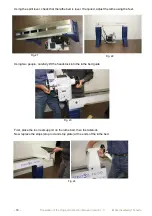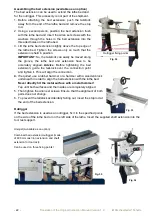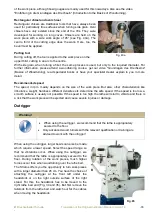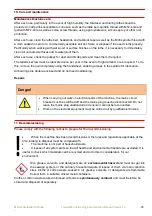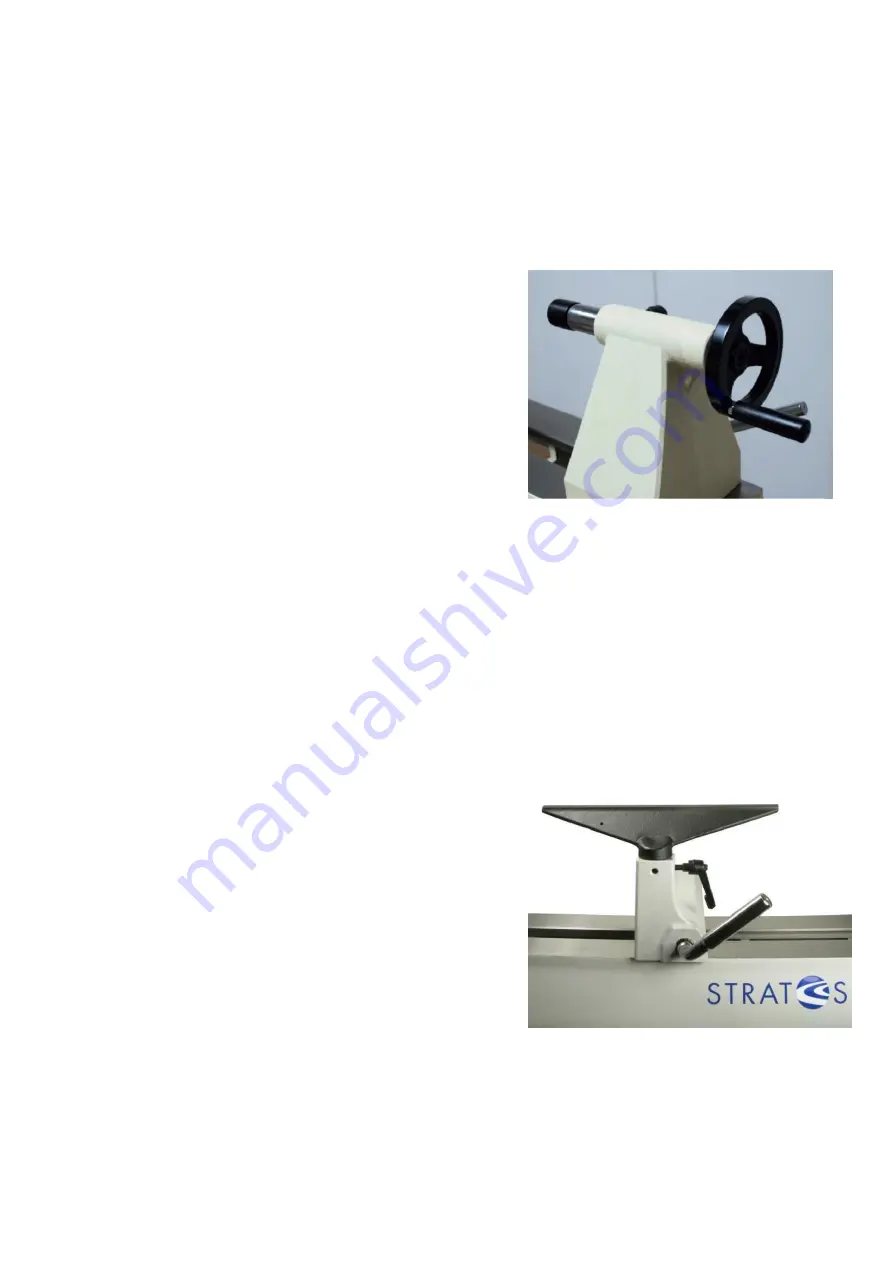
©
Drechselbedarf Schulte
- 24 -
Translation of the Original Instruction Manual Version 1.0
Fig. 42
Replacing the spur centre
Using the supplied knock out bar, the spur centre can be pushed out from the rear through the spindle
shaft. Initially, try to push out the spur centre with gentle taps. During this process, carefully hold on to
the outside of the spur centre with your other hand. Do not hold on to the spur centre at its face or by the
jaws as this can cause injuries.
Tailstock
Never loosen the quill on the tailstock or the tailstock itself while the work piece is rotating. The tailstock
is equipped with a MT2 quill. The quill guide is equipped with a quick-release lever which must always be
fixed using the handwheel after securing the side grain. Next to the quick-release lever, there is a lock
lever which is used for adjusting the quill. Please ask
your specialist dealer if needed.
On the back of the tailstock, there is the clamping lever
for fixing the tailstock on the lathe bed. It can be removed
by loosening the snap ring and relocated to the front of
the tailstock.
Regularly check proper clamping of the tailstock on the
lathe bed. The tailstock guarantees an exact alignment
between live centre and spur centre. This guarantees low
vibration woodturning and is the best prerequisite for
exact drilling with a tailstock.
To move the tailstock on the lathe bed, loosen the
clamping lever, move the tailstock to the required position and secure it there again. To
move the quill in or out, loosen the quill's quick-release lever and turn the handwheel. Live centres and
tools with a No. 2 Morse taper (MT2) can be used with the quill. To attach the tool, insert it quickly and
tightly by hand into the quill support. Do not hit it into the socket.
To prevent the tool falling out, hold on to it from the outside. Caution: The centre point can cause
injuries.
Replacing the live centres
The live centre can be ejected by turning the headstock handwheel counter clockwise. Alternatively, it
can also be pushed out from the rear with the knockout bar.
Tool rest
After loosening the clamping lever, the tool rest support is
moved to the required position on the lathe bed and
secured there.
Move the tool rest close to the work piece. Every wood
turner will choose the best setting for himself/herself.
Before turning on the lathe, the work piece is rotated
manually to ensure that it has no contact with the tool rest.
During the work process, the lathe is stopped, and the tool
rest is adjusted at regular intervals.
Fig. 43
Содержание FU-230
Страница 1: ...FU 230 WOOD TURNING LATHE...









